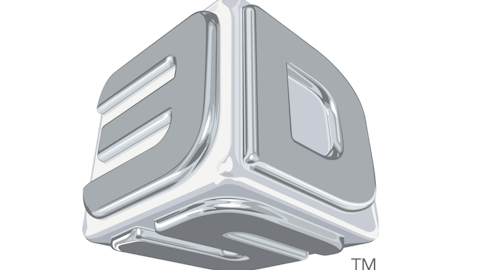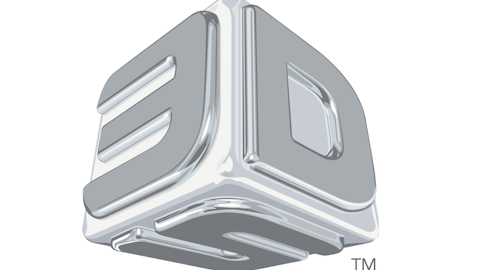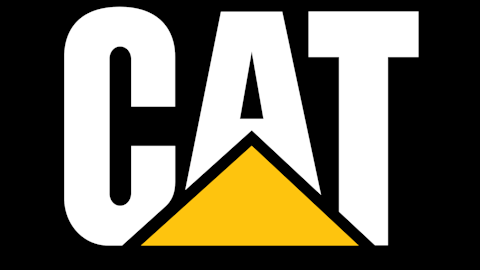3D Systems Corporation (NYSE:DDD) reported earnings a week ago, and despite showing strong growth, the company just couldn’t convince investors that its long-term progress would be worth a continued high premium. Contrast that with Stratasys, Ltd. (NASDAQ:SSYS), which blew away Wall Street with impressive non-GAAP results after its merger with Objet was finalized at the start of December. There’s some evidence that this merger threw off analyst expectations, as you can see from the divergence between the Street’s consensus and the actual results:
- 2012 fourth quarter pro forma adjusted revenue: $96.4 million
- 2012 fourth quarter GAAP revenue: $71.2 million
- 2012 fourth quarter analyst consensus: $52.8 million
- 2012 fourth quarter adjusted EPS: $0.40
- 2012 fourth quarter EPS consensus: $0.38
Stratasys’ non-GAAP results show an amazing beat of the Street’s top-line estimate, and represent a 23% growth rate year over year. On a GAAP basis, it’s even more impressive, since the company posted a 63% growth rate from the $43.6 million in revenue reported for the fourth quarter of 2011. Keep in mind that Stratasys, Ltd. (NASDAQ:SSYS) did not specifically mention whether Objet sales are part of this jump. I believe that there was an impact, but we at the Fool have reached out to Stratasys for clarification and will update as necessary. The adjusted bottom line was closer to what analysts were looking for, and was a 40% increase over the year-ago period.
Stratasys also reported a 29% increase in unit shipments, which works out to about 3,357 3-D printers against the 2,602 systems shipped in 2011. 3D Systems Corporation (NYSE:DDD), by comparison reported 124% higher unit sales in 2012, but did not break out specific sales totals or include sales of the low-cost Cube consumer line.
However, it appears that investors may be overreacting just a bit to this positive report. Thankfully, there was no stock split fiasco, as occurred with 3D Systems, so we can still examine accurate valuations at most investing sites. Stratasys, Ltd. (NASDAQ:SSYS)’s 81.2 P/E remains higher than 3D Systems Corporation (NYSE:DDD)’s 76.1 P/E as of this writing, and since the company’s GAAP earnings per share guidance fails to break into positive territory for 2013, it appears that this metric is only going to get worse.
What the numbers tell you
Before we get started, let’s first take a look at how Stratasys’ quarterly GAAP results look in terms of its recent earnings history:

Sources: Morningstar and company earnings report.
* Fourth-quarter free cash flow total not available at the time of this writing.
The fourth-quarter divergence between GAAP revenue and GAAP net income is striking, and seems to indicate a struggle to mesh Stratasys and the Israeli-based Objet when paired with forward guidance calling for a GAAP loss of between $0.16 and $0.41 per share. On the other hand, non-GAAP EPS guidance for 2013 calls for profit in the range of $1.80-$1.95, which represents growth of between 21% and 31% over this year’s non-GAAP EPS of $1.49. Keep in mind that 3D Systems has undertaken a large number of acquisitions of varying sizes in the past three years, and has not fallen into GAAP-method red ink at any time over this period as it’s bolted these new parts onto its corporate structure. A significant part of the difference between Stratasys’ GAAP and non-GAAP estimates is a $60.5 million intangible amortization charge, and $23.0 million in share-based compensation. Stratasys also expects “significant one-time integration expenses” as it connects its various moving parts more effectively with Objet’s.
Here’s something to ponder, though. Even on the high end, Stratasys’ projected non-GAAP earnings growth is lower than 3D Systems’, which calls for up to 38% more earnings per share in 2013 after accounting for the stock split. Additionally, Stratasys has a far greater degree of divergence between its GAAP results and its adjusted results than does 3D Systems. Add that all up: a higher P/E ratio, a projected GAAP net loss, full-year revenue growth for 2013 guided to a maximum of 24% higher than 2012’s result, and adjusted EPS growth of 31% — both of which come in lower than the upper bound of 3D Systems’ guidance range. Why is Stratasys now up 7% when 3D Systems fell on better numbers?
Keep in mind that the company’s 2013 guidance range is slightly ahead of the analyst consensus on both top and bottom lines, which called for $421 million in revenue (Stratasys sees between $430 million and $445 million) and earnings of $1.86 per share. Also keep in mind that 3D Systems’ guidance was also ahead of the consensus on its high end, and the stock fell by double digits.
Foolish final thoughts
Stocks can behave in strange ways, and this appears to be an excellent example. There’s no obvious reason why 3D Systems should fall and Stratasys rise under rather similar circumstances, and after both reports are in, it seems more evident that while both are quite dearly valued, Stratasys is (and will likely continue to be) the pricier of the two, barring a correction like the one that hit 3D Systems last week. Investors seem to now expect greater things out of the Objet-augmented Stratasys, but this hope may be somewhat misplaced. After all, 3D Systems still anticipates a better growth rate, whether or not that growth is acquisition-driven.
The article Is Stratasys Really the New Top 3-D Printing Stock? originally appeared on Fool.com and is written by Alex Planes.
Fool contributor Alex Planes holds no financial position in any company mentioned here. Add him on Google+ or follow him on Twitter @TMFBiggles for more insight into markets, history, and technology.The Motley Fool recommends 3D Systems and Stratasys. The Motley Fool owns shares of 3D Systems and Stratasys and has the following options: Short Jan 2014 $36 Calls on 3D Systems and Short Jan 2014 $20 Puts on 3D Systems.
Copyright © 1995 – 2013 The Motley Fool, LLC. All rights reserved. The Motley Fool has a disclosure policy.




